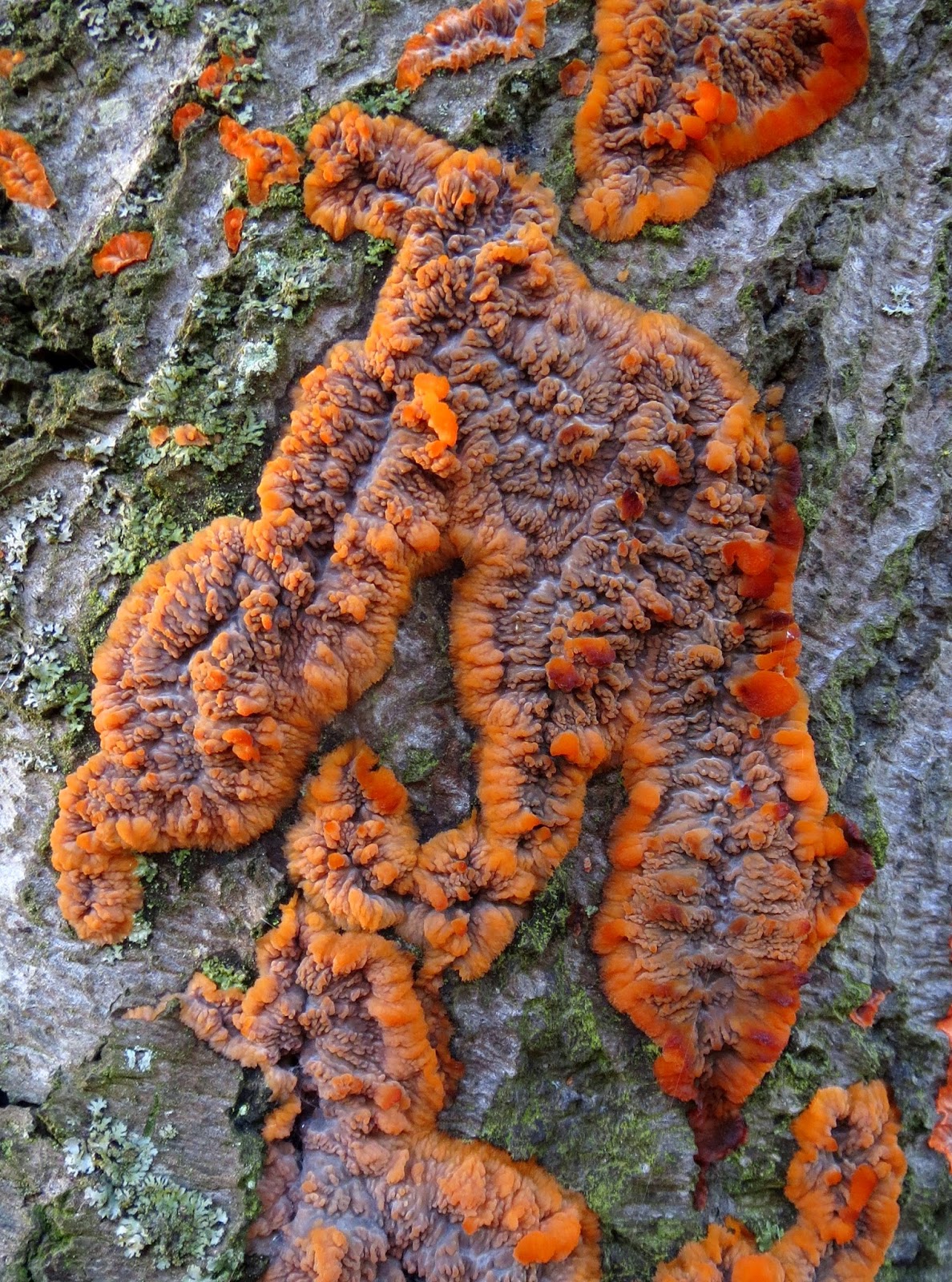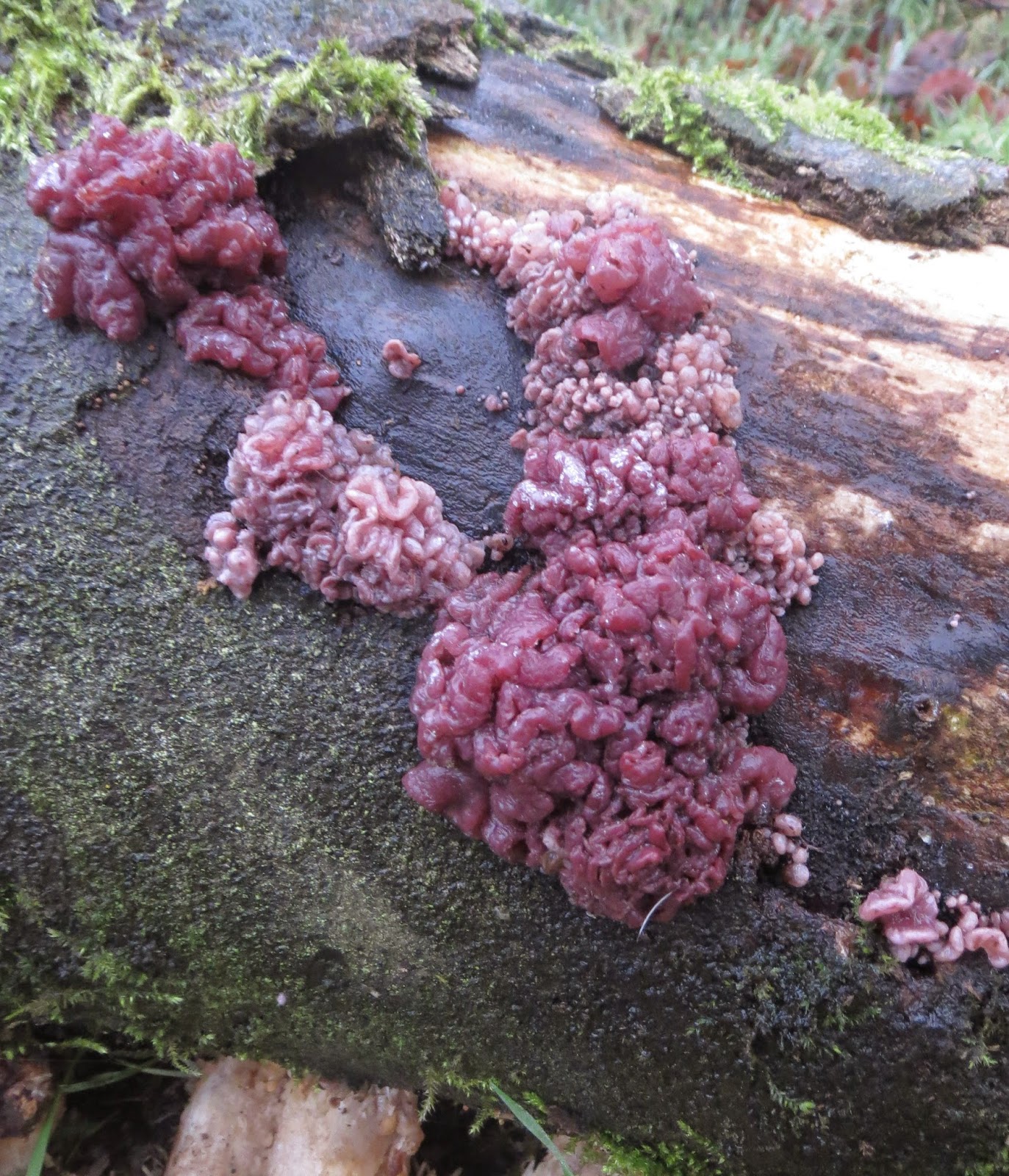Chesser Meet, 15./01/2015
Exidiopsis, Balerno (?), on conifer (?)
This nice
Exidiopsis performed well under the lens. Keyed out very quickly in E&E to
Exidiopsis, but then two potential candidates emerge, depending on colour -
E.effusa and
E.calcea. If it's pinkish/lilaceous then
effusa is the favourite.
The red flag on
effusa is that the substrate appeared to be coniferous, whereas
effusa has a preference for deciduous wood. The description of
calcea is very close, but it should lack the coloration described for
effusa. It's not particularly colourful.
The other factor which suggests
calcea is that according to the Swiss the spore size for
effusa tops out at 15um, whereas ours were definitely bigger.
On balance I think this is
E.calcea, but I don't recall a concensus on the night.
 |
| Pelicular resupinate, <0.5mm, colour? |
 |
| Spores j-, hyaline, smooth, c.17.c x 6um, cylindrical-allantoid |
 |
| Basidium with epibasida @ x1000 |
 |
| Top view showing form |
 |
| Basidium septa |
 |
| Mycobank |



















































